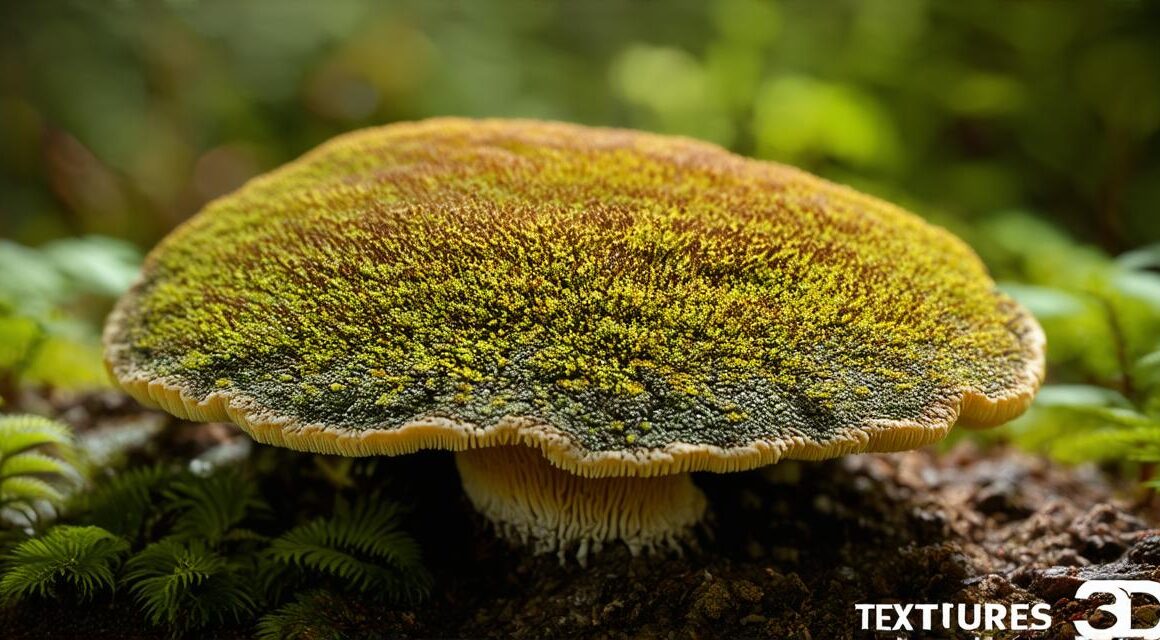In recent years, there has been a growing interest in incorporating realistic 3D fungi into Unity projects. These organisms are incredibly diverse and can be found in a variety of environments, from forests to oceans, and even on the surface of other planets. Simulating the growth of 3D fungi in Unity can be a complex task, but with the right tools and techniques, it is possible to achieve stunningly realistic results.
Understanding Fungal Growth Mechanisms

Before diving into the technical aspects of simulating fungal growth in Unity, it is essential to understand the underlying mechanisms that govern this process. Fungi are eukaryotic organisms that belong to the kingdom Fungi. They are composed of a single cell, called a protonema, which gives rise to a network of hyphae.
These threads grow in all directions and can penetrate various materials, including soil, wood, and even metal. Fungal growth is driven by several factors, including nutrient availability, temperature, moisture, and pH levels. When fungi encounter an appropriate environment, they begin to grow by elongating their hyphae, which absorb nutrients and water from the surrounding medium. Over time, these threads branch out and create a dense network that forms the basis of the fungal colony.
Simulating Fungal Growth in Unity
Now that we have a basic understanding of fungal growth mechanisms let’s explore how to simulate this process in Unity. There are several approaches to modeling fungal growth, including:
1. Terrain-Based Simulation
One of the most straightforward ways to simulate fungal growth in Unity is by using terrain-based techniques. This approach involves creating a 3D model of the environment where the fungi will grow and applying various textures and materials to represent the different surfaces that the hyphae will encounter. Then, you can use scripts to simulate the growth of the fungi based on the nutrient availability and other environmental factors.
2. Volume-Based Simulation
Another approach to simulating fungal growth in Unity is by using volume-based techniques. This method involves creating 3D volumes that represent the individual hyphae and applying rules that govern their behavior based on environmental factors. For example, you could use a rule that causes hyphae to grow faster when they encounter nutrient-rich environments or slower when they are exposed to harsh conditions such as high temperatures or low moisture levels.
3. Agent-Based Simulation
Agent-based simulation is another method for simulating fungal growth in Unity. In this approach, each fungal cell is represented as an agent that interacts with its environment based on a set of rules and behaviors. These agents can be programmed to respond to environmental cues such as nutrient availability, temperature, and moisture levels, which affects their growth rate and behavior.
Real-World Examples of 3D Fungal Growth in Unity
Now that we have explored the various approaches to simulating fungal growth in Unity let’s look at some real-world examples of this technique in action.
1. “Fungi Forest” by Daniel Díaz and Carlos Vargas
In this project, Díaz and Vargas created a 3D forest environment that incorporates realistic fungal growth using terrain-based techniques. They used Unity’s landscape tools to create a detailed forest scene and applied custom shaders and textures to represent the different types of foliage. Then, they used scripts to simulate the growth of fungi based on environmental factors such as nutrient availability and moisture levels.
The result is a stunningly realistic forest environment that features dense fungal growth that responds to changes in the environment. The use of terrain-based techniques allows for a highly accurate representation of fungal growth, creating an immersive and engaging experience for the viewer.
2. “Mycelium Architecture” by Katsuya Tanaka
In this project, Tanaka explored the potential of fungi as building materials by using 3D modeling techniques to create a series of architectural structures made entirely of mycelium (the vegetative part of fungi). He used Unity’s sculpting tools to model the different shapes and forms of the mycelium, and then applied custom shaders and textures to create a realistic representation of the fungal growth.
The result is a series of unique and innovative structures that showcase the potential of fungi as a sustainable building material. The use of 3D modeling techniques allows for a high level of customization and creativity, enabling Tanaka to create truly remarkable works of art that push the boundaries of traditional architecture.
FAQs
1. What software do I need to simulate fungal growth in Unity?
To simulate fungal growth in Unity, you will need a computer with a graphics processing unit (GPU) and a version of Unity that supports scripting and 3D modeling. You may also need additional software such as 3D modeling tools like Blender or Maya, depending on the approach you choose to use.
2. How do I create custom shaders and textures for fungal growth in Unity?
To create custom shaders and textures for fungal growth in Unity, you will need to have a basic understanding of shader programming and texture mapping. There are many online resources available that can help you get started, including tutorials and sample code.
3. How do I incorporate real-world environmental factors into my fungal growth simulation?
To incorporate real-world environmental factors into your fungal growth simulation, you will need to use scripts that can respond to changes in the environment such as nutrient availability, temperature, and moisture levels. You may also need to use sensors or other hardware devices to measure these factors and feed them into your simulation.
Conclusion
Simulating fungal growth in Unity is a fascinating and creative application of 3D modeling and scripting techniques. By using terrain-based, volume-based, or agent-based approaches, you can create highly realistic and engaging simulations that showcase the beauty and complexity of fungal growth. With the right tools and knowledge, the possibilities are endless, from immersive forest environments to innovative architectural structures made entirely of mycelium.



